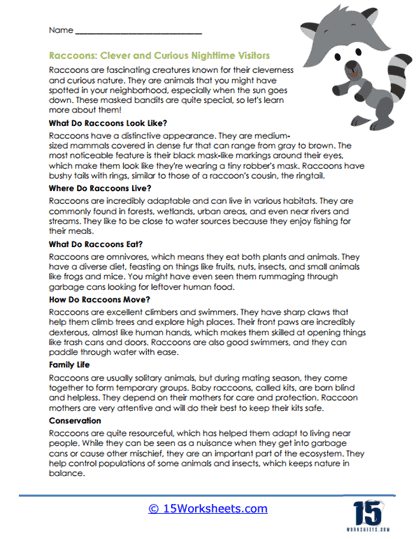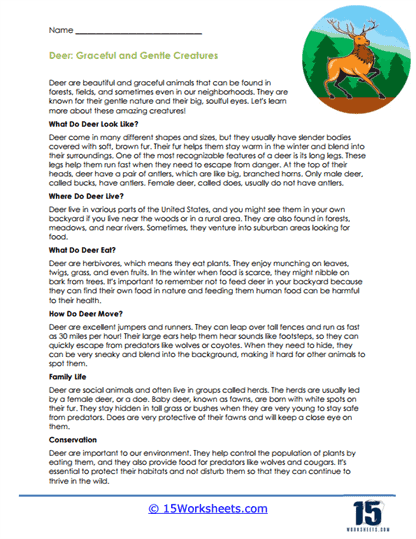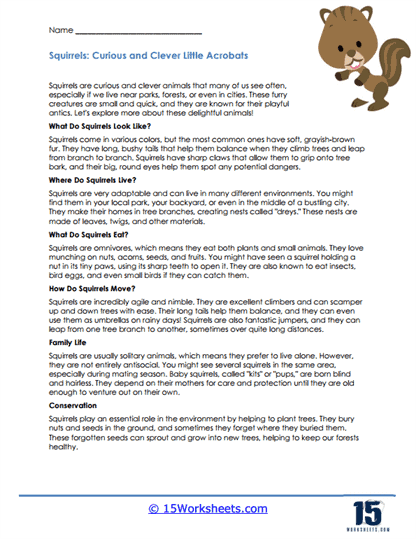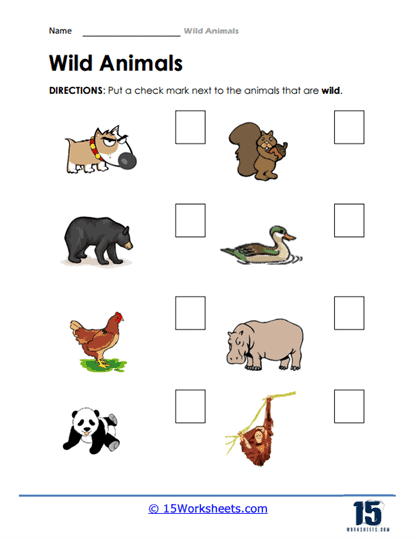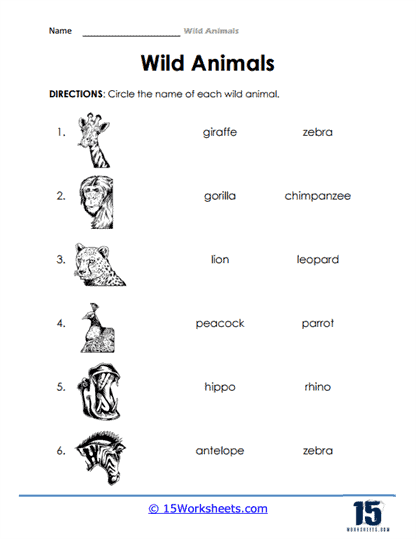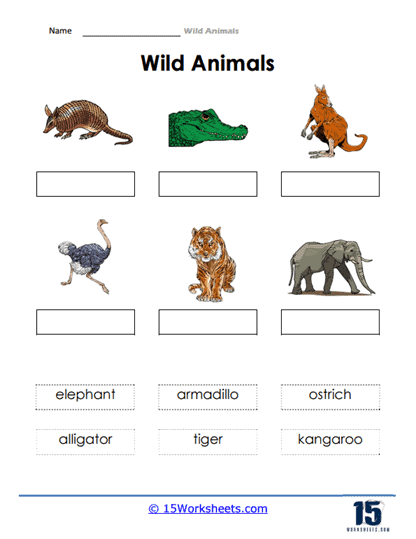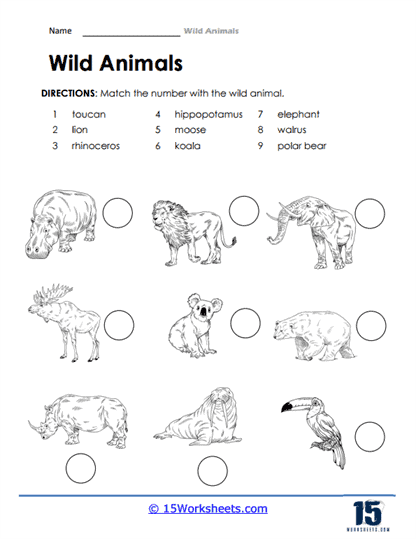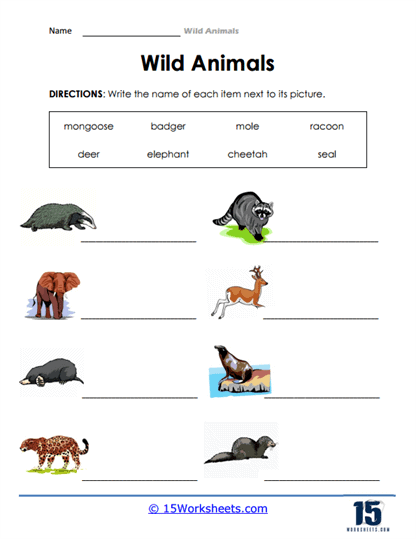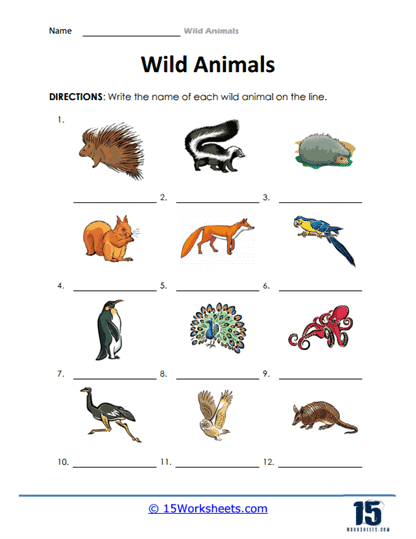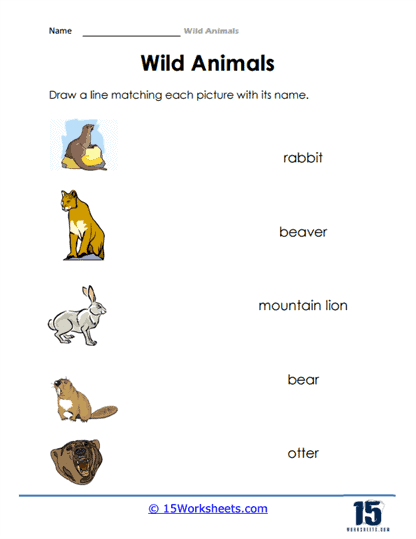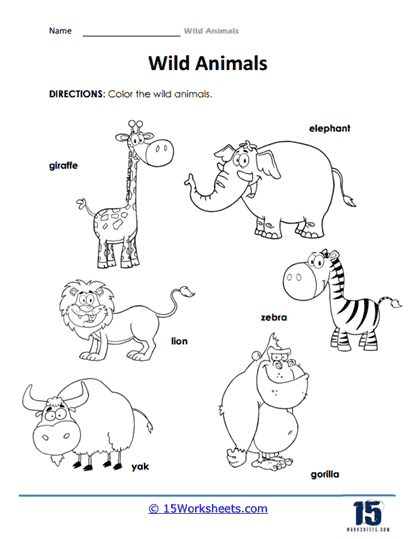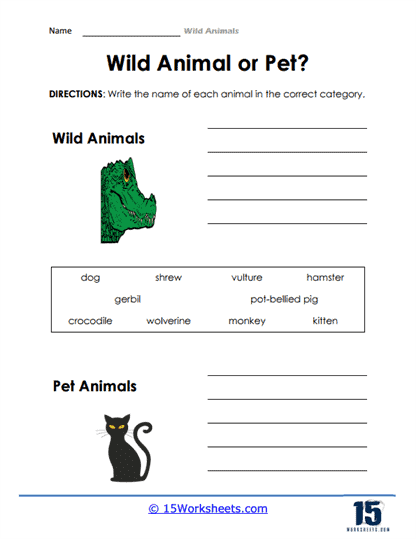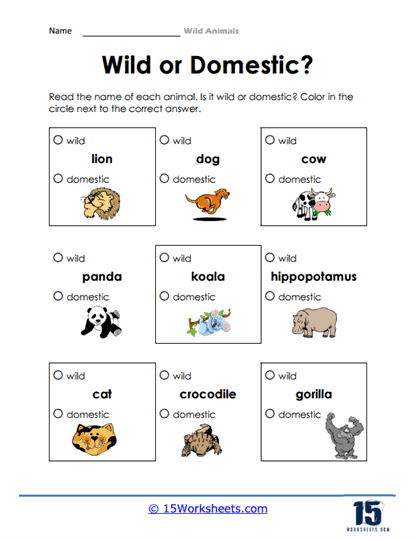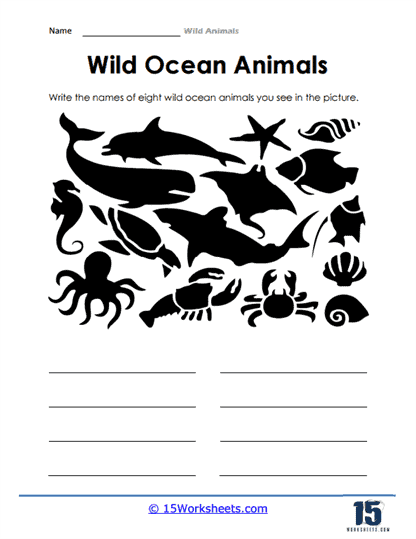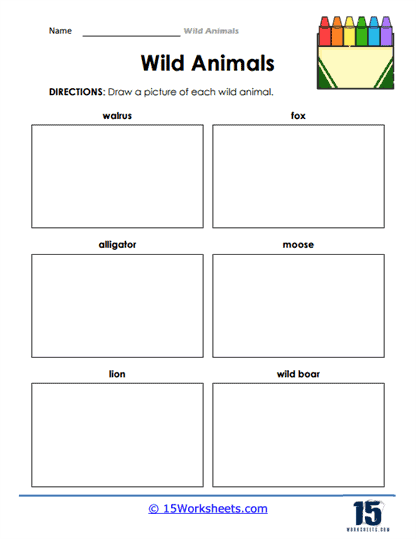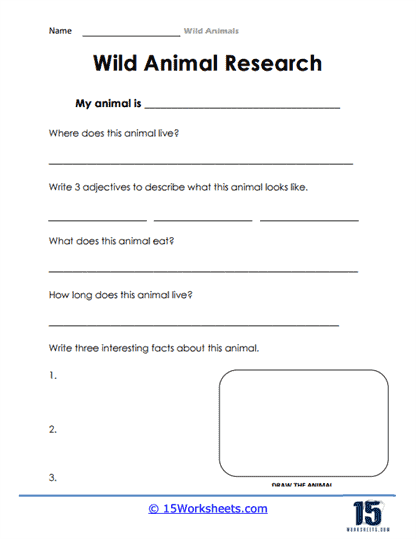Wild Animals Worksheets
All About These 15 Worksheets
This collection of 15 worksheets is designed to help students learn about wild animals and their characteristics. The exercises focus on developing an understanding of what constitutes a wild animal, as well as identifying and classifying different types of wild animals.
Some worksheets feature pictures of animals and ask students to classify them as wild or not wild, while others ask students to identify the names of wild animals or match them to pictures. There are also worksheets that encourage critical thinking and problem-solving, such as distinguishing wild animals from pets or domestic animals by using their pictures as visual clues. Additionally, there are activities that ask students to draw pictures of wild animals and describe their physical features, habitats, and behaviors.
Through these worksheets, students can develop their knowledge of wild animals, improve their vocabulary and language skills, and gain a greater appreciation for the natural world. These worksheets are designed to be suitable for students of different ages and levels of proficiency in English and can be used as classroom activities or as homework assignments.
What are Wild Animals?
Wild animals are non-domesticated animals that live and thrive in their natural habitats without direct human intervention or control. They have evolved and adapted to survive in various ecosystems, such as forests, grasslands, deserts, mountains, wetlands, and oceans. Wild animals can be found across all taxonomic groups, including mammals, birds, reptiles, amphibians, fish, and invertebrates.
Unlike domesticated animals, which have been selectively bred and adapted to live alongside humans, wild animals rely on their instincts, natural behaviors, and physical adaptations to find food, reproduce, and protect themselves from predators and other threats. They are essential components of the ecosystems they inhabit, contributing to the balance and functioning of these environments through processes such as predation, herbivory, pollination, and nutrient cycling.
Conserving wild animals and their habitats is crucial for maintaining biodiversity and the overall health of our planet’s ecosystems. As human activities increasingly threaten wildlife populations and habitats through habitat loss, pollution, climate change, and the spread of invasive species, efforts to protect and preserve wild animals and their environments have become more important than ever.

